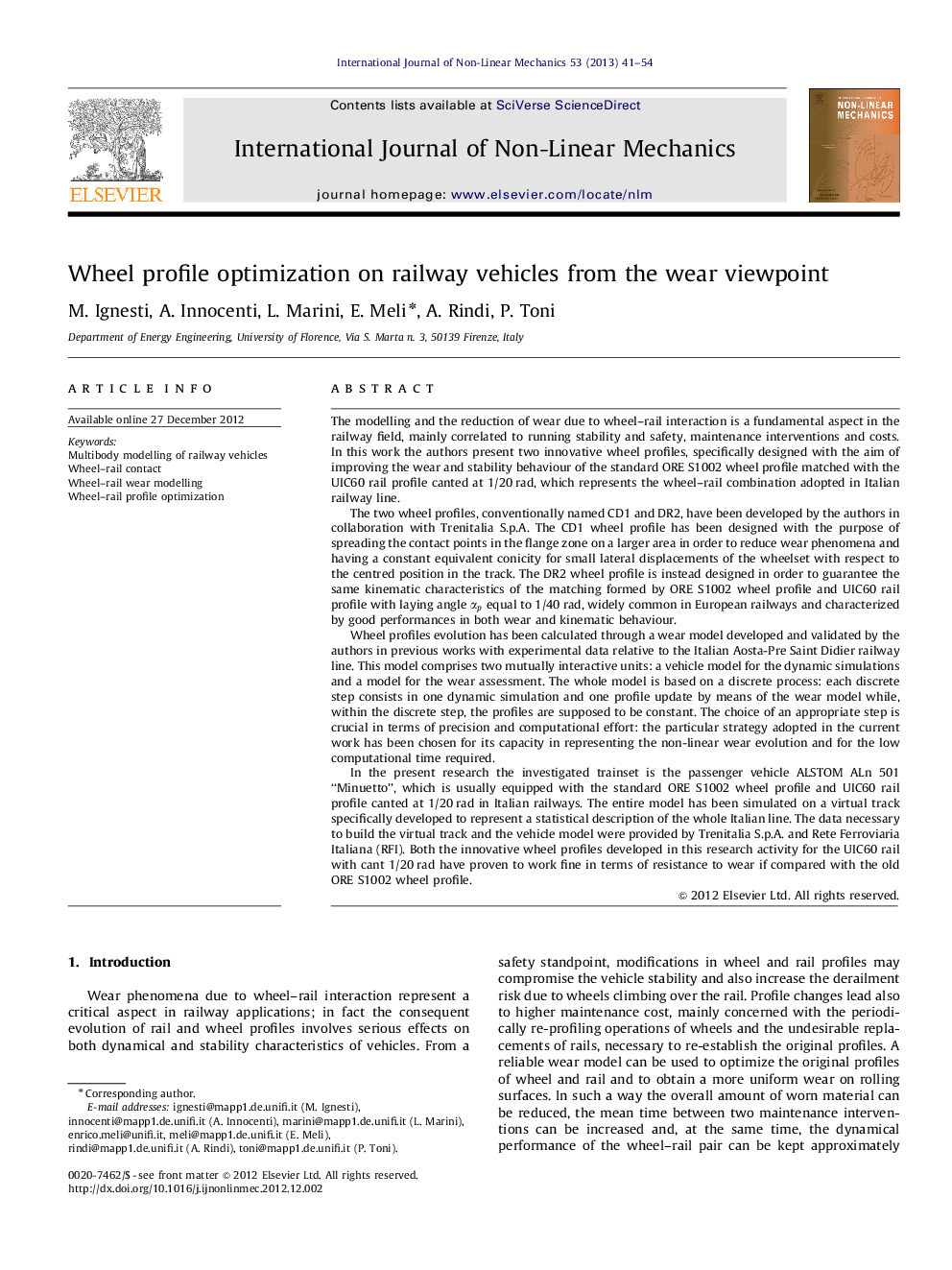| کد مقاله | کد نشریه | سال انتشار | مقاله انگلیسی | نسخه تمام متن |
|---|---|---|---|---|
| 787975 | 1465342 | 2013 | 14 صفحه PDF | دانلود رایگان |

The modelling and the reduction of wear due to wheel–rail interaction is a fundamental aspect in the railway field, mainly correlated to running stability and safety, maintenance interventions and costs. In this work the authors present two innovative wheel profiles, specifically designed with the aim of improving the wear and stability behaviour of the standard ORE S1002 wheel profile matched with the UIC60 rail profile canted at 1/20 rad, which represents the wheel–rail combination adopted in Italian railway line.The two wheel profiles, conventionally named CD1 and DR2, have been developed by the authors in collaboration with Trenitalia S.p.A. The CD1 wheel profile has been designed with the purpose of spreading the contact points in the flange zone on a larger area in order to reduce wear phenomena and having a constant equivalent conicity for small lateral displacements of the wheelset with respect to the centred position in the track. The DR2 wheel profile is instead designed in order to guarantee the same kinematic characteristics of the matching formed by ORE S1002 wheel profile and UIC60 rail profile with laying angle αpαp equal to 1/40 rad, widely common in European railways and characterized by good performances in both wear and kinematic behaviour.Wheel profiles evolution has been calculated through a wear model developed and validated by the authors in previous works with experimental data relative to the Italian Aosta-Pre Saint Didier railway line. This model comprises two mutually interactive units: a vehicle model for the dynamic simulations and a model for the wear assessment. The whole model is based on a discrete process: each discrete step consists in one dynamic simulation and one profile update by means of the wear model while, within the discrete step, the profiles are supposed to be constant. The choice of an appropriate step is crucial in terms of precision and computational effort: the particular strategy adopted in the current work has been chosen for its capacity in representing the non-linear wear evolution and for the low computational time required.In the present research the investigated trainset is the passenger vehicle ALSTOM ALn 501 “Minuetto”, which is usually equipped with the standard ORE S1002 wheel profile and UIC60 rail profile canted at 1/20 rad in Italian railways. The entire model has been simulated on a virtual track specifically developed to represent a statistical description of the whole Italian line. The data necessary to build the virtual track and the vehicle model were provided by Trenitalia S.p.A. and Rete Ferroviaria Italiana (RFI). Both the innovative wheel profiles developed in this research activity for the UIC60 rail with cant 1/20 rad have proven to work fine in terms of resistance to wear if compared with the old ORE S1002 wheel profile.
► Design of two innovative wheel profiles with high wear and stability performance.
► Development of an innovative model for the wear prediction at the wheel–rail interface.
► Multibody models and an innovative wheel–rail contact model have been used to study the dynamics of the vehicle.
► The performances of standard and new profiles have been compared to each other on the whole Italian railway net.
Journal: International Journal of Non-Linear Mechanics - Volume 53, July 2013, Pages 41–54